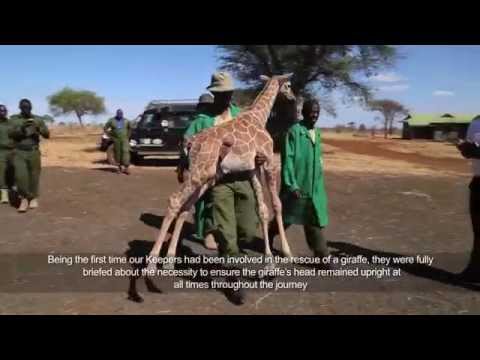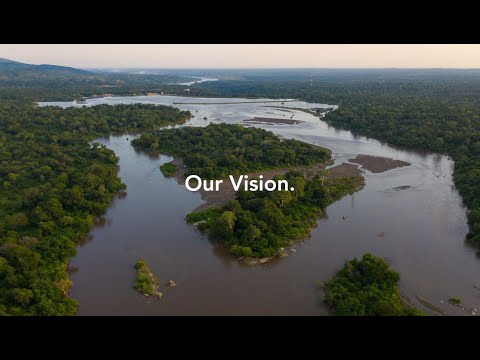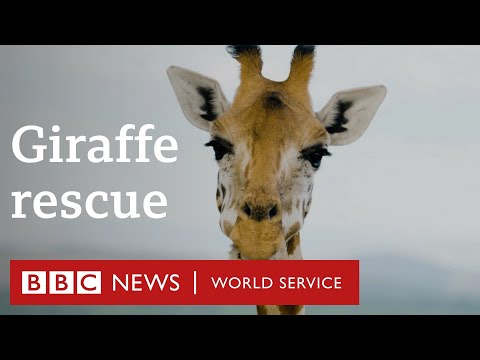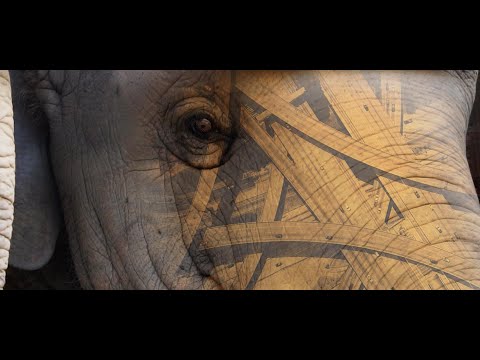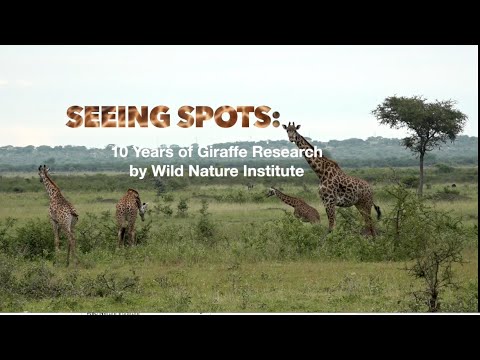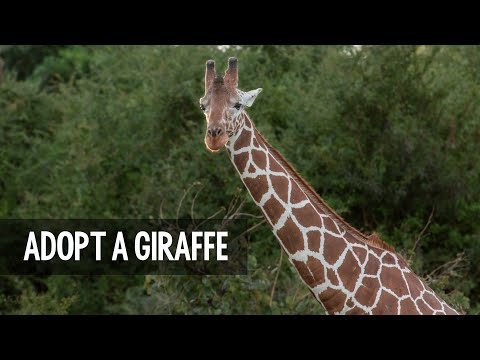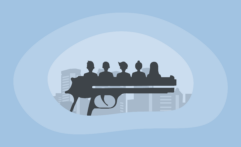9 Best Charities for Protecting Giraffes (Complete 2024 List)
Impactful Ninja is reader-supported. When you buy through links on our site, we may earn an affiliate commission.
Learn more
Learn more
.
Hey fellow impactful ninja ? You may have noticed that Impactful Ninja is all about providing helpful information to make a positive impact on the world and society. And that we love to link back to where we found all the information for each of our posts. Most of these links are informational-based for you to check out their primary sources with one click. But some of these links are so-called "affiliate links" to products that we recommend. First and foremost, because we believe that they add value to you. For example, when we wrote a post about the environmental impact of long showers, we came across an EPA recommendation to use WaterSense showerheads. So we linked to where you can find them. Or, for many of our posts, we also link to our favorite books on that topic so that you can get a much more holistic overview than one single blog post could provide. And when there is an affiliate program for these products, we sign up for it. For example, as Amazon Associates, we earn from qualifying purchases. First, and most importantly, we still only recommend products that we believe add value for you. When you buy something through one of our affiliate links, we may earn a small commission - but at no additional costs to you. And when you buy something through a link that is not an affiliate link, we won’t receive any commission but we’ll still be happy to have helped you. When we find products that we believe add value to you and the seller has an affiliate program, we sign up for it. When you buy something through one of our affiliate links, we may earn a small commission (at no extra costs to you). And at this point in time, all money is reinvested in sharing the most helpful content with you. This includes all operating costs for running this site and the content creation itself. You may have noticed by the way Impactful Ninja is operated that money is not the driving factor behind it. It is a passion project of mine and I love to share helpful information with you to make a positive impact on the world and society. However, it's a project in that I invest a lot of time and also quite some money. Eventually, my dream is to one day turn this passion project into my full-time job and provide even more helpful information. But that's still a long time to go. Stay impactful,Affiliate Disclosure
Why do we add these product links?
What do these affiliate links mean for you?
What do these affiliate links mean for us?
What does this mean for me personally?
![]()
Giraffes were once a common sight across the African Savanna. Yet, today there are just 97,000 individuals left in the wild, a decrease of 40% since the 1980s. Nicknamed the silent extinction, the disappearance of these gentle giants had gone largely unnoticed until recently. Fortunately, many charities are now working hard to protect the remaining populations of giraffes and ensure their survival for future generations. So we had to ask: What are the best charities for protecting giraffes?
The best charities for protecting giraffes are the Giraffe Conservation Foundation and the International Anti-Poaching Foundation. Charities like the Wild Nature Institute and the Ivan Carter Wildlife Conservation Alliance work to expand natural giraffe habitats and raise awareness of their plight.
Whether you want to expand giraffe habitat, combat the illegal wildlife trade, or improve our knowledge of the threats facing giraffes, there is a charity for you. Keep reading to learn more about what the best charities for protecting giraffes are all about, how they work, and what your best way would be to make a contribution.
Here’s What All the Best Charities for Protecting Giraffes Have in Common
The charities on this list were chosen based on their mission, impact and transparency ratings, and achievements.
They operate across Africa, protecting the last remaining populations of giraffes in the wild.
Many of the charities on this list focus their efforts on formulating robust conservation management plans to ensure the continued survival of giraffes. Others monitor wild giraffes and tackle the illegal trafficking of their body parts.
Yet they all share the same goal; to conserve the gentle giants of the African Savanna.
These Are the 9 Best Charities for Protecting Giraffes in 2024
Below are our favorite charities for protecting giraffes (you can click on their link to directly jump to their section in this article):
Best Charities For Protecting Giraffes
(At the end of this article we’ll also share our six-step approach on how you can select the best charity to support.)
Giraffe Conservation Foundation: Securing a Future For All Giraffe Populations in the Wild
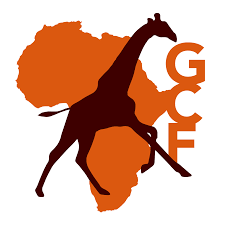
🔎
Their transparency & ratings:
The Giraffe Conservation Foundation has a 3-star rating from Charity Navigator and a Platinum Seal of Transparency from GuideStar.
“We envision a world where all giraffe can live wild and free within their historic ranges or habitats throughout Africa and are protected by the people around them”
Giraffe Conservation Foundation
⚒️
What they do:
The Giraffe Conservation Foundation works with local governments and like-minded non-profits to establish innovative, scientific-based conservation plans to save giraffes in the wild. For example, they conduct regular population assessments and identify key threats to wild giraffes through their Giraffe Resource Center. They also run giraffe translocation projects to expand the giraffe range across Africa and increase giraffe field conservation through their Giraffe Action Fund. In addition, they work with local organizations to provide anti-poaching and de-snaring support. Furthermore, the charity raises awareness of the plights facing wild giraffe populations through their annual World Giraffe Day initiative (21st June).
🚀
What they’ve achieved:
Today, the Giraffe Conservation Foundation actively supports giraffe conservation initiatives in 18 African countries. Their work has positively impacted over 100 million acres and all four native giraffe species. For example, through their partnership with the Uganda Wildlife Authority (UWA), they successfully saved 300 critically endangered Nubian giraffes with snare wounds, which is 10% of their entire population. Furthermore, in 2021, the GCF relocated 24 giraffes in Namibia and 10 giraffes from South Africa to Malawi. In total, they have now successfully translocated vulnerable giraffes over 3,000 km across South Africa.
✨
Ways to contribute:
You can donate directly to the Giraffe Conservation Foundation through their website. You can also support the charity by symbolically adopting a giraffe or by purchasing items from their online store.
International Anti-Poaching Foundation: End Poaching in Africa
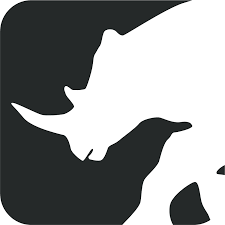
🔎
Their transparency & ratings:
The International Anti-Poaching Foundation has a 4-star rating from Charity Navigator, as well as a Platinum Seal of Transparency from GuideStar.
“Working tirelessly to give those who live among Africa’s precious wildlife the means to keep them safe.”
International Anti-Poaching Foundation
⚒️
What they do:
The International Anti-Poaching Foundation is working to end poaching in Africa by training individuals in local communities to become wildlife rangers. For example, their Akashinga team is the first all-women anti-poaching team arresting poachers with minimal conflict, including those targeting giraffes for their meat, brains, tails, and bone marrow. In addition, through their LEAD Ranger program, the charity delivers tailored training, mentoring, and long-term support to develop Wildlife Crime-Enforcement Leaders. Through these initiatives, they also create vital education and employment opportunities for communities in rural Africa.
🚀
What they’ve achieved:
Since their founding, the International Anti-Poaching Foundation has actively protected over 8.5 million acres of land through more than 50 conservation initiatives. As a result, Africa has seen an 80% reduction in poaching and a 399% increase in wildlife, including giraffes. For example, in 2021, the Akashinga patrol unit made 351 arrests in 208 separate operations for 151 wildlife offenses. They had an overall conviction rate of 84.5% between 2018 and 2021. Moreover, the charity has trained over 200 instructors from 5 countries, which have shared their practices with an additional 5,000 rangers. This has resulted in the protection of 14 million acres of wilderness.
✨
Ways to contribute:
You can donate directly to the International Anti-Poaching Foundation through their website. You can also support the charity by fundraising or becoming a Guardian.
Sheldrick Wildlife Trust: Conservation. Preservation. Protection
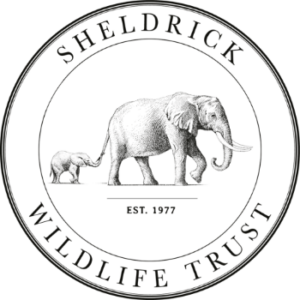
🔎
Their transparency & ratings:
The Sheldrick Wildlife Trust has a 4-star rating from Charity Navigator and a Platinum Seal of Transparency from GuideStar.
“We exist to protect Africa’s wildlife and preserve habitats for the future of all wild species.”
Sheldrick Wildlife Trust
⚒️
What they do:
The Sheldrick Wildlife Trust runs conservation projects to protect the biodiversity of East Africa, including giraffes. For example, they deploy aerial survey operations and anti-poaching units to deter illegal activity. Moreover, they install boreholes and deliver water and troughs to areas affected by drought, which is a major identified threat to giraffe populations. Mobile Veterinary Units are also used to alleviate the suffering of wild animals in need. In addition, the charity works with organizations such as the Kenya Forest Service to secure and protect vital habitats by erecting fence lines and reducing human-wildlife conflict across Kenya.
🚀
What they’ve achieved:
Since their founding, the Sheldrick Wildlife Trust has protected over 2 million acres of land and erected more than 267 km of fencing to conserve local wildlife in Kenya, including giraffes. Furthermore, they have attended 10,473 wild animal veterinary cases and drilled more than 32 boreholes to provide vital water for vulnerable wild species. For example, in 2022, the charity’s 25 patrol teams recovered and destroyed 12,582 snares and seized 3,172 illegal poaching weapons across Tsavo, Chyulus, Meru, Galana, Kibwezi, and Mau forests.
✨
Ways to contribute:
You can donate directly to the Sheldrick Wildlife Trust through their website. You can also support the charity by purchasing gifts from their online shop or by symbolically adopting an orphan.
African Parks: Rehabilitation and Long-Term Management of Protected Wildlands
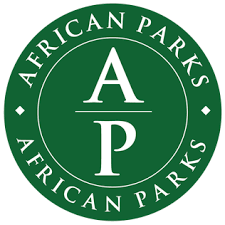
🔎
Their transparency & ratings:
African Parks has a 4-star rating from Charity Navigator.
“Taking on direct responsibility for the rehabilitation and long-term management of protected areas in partnership with governments and local communities.”
African Parks
⚒️
What they do:
African Parks provide safety, education, and long-term stability for local communities and wildlife across Africa, including giraffes. They do this by implementing their African Parks Model, which allows African National Parks to maintain their full responsibilities and management functions, while the charity puts funding in place through fundraising and tourism initiatives. They also secure park boundaries to prevent human-wildlife conflict and implement robust anti-poaching enforcement to combat the illegal wildlife trade. This ensures the longevity and protection of Africa’s protected wildlife, including giraffes.
🚀
What they’ve achieved:
Since their founding, African Parks has remained dedicated to protecting Africa’s natural landscape as well as its native wildlife, including giraffes. Today, they oversee the management and protection of 22 African Wildlife Parks, covering over 14.8 million hectares. This equates to the largest and most ecologically diverse amount of land protected under one non-profit on the continent, with 10 of the 13 most vital biomes on mainland Africa covered. Furthermore, in 2018, they translocated 13 giraffes over 2,500 km and released them safely into Malawi’s Majete Wildlife Reserve, ensuring their survival for generations to come.
✨
Ways to contribute:
You can donate directly to African Parks through their website. You can also offer your support by joining the charity as a member.
Save Giraffes Now: Making a Difference for Giraffes in the Wild
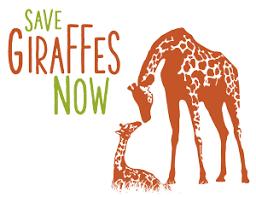
🔎
Their transparency & ratings:
Save Giraffes Now has a Silver Seal of Transparency from GuideStar. According to their financial report, the charity spent 81% of their income on charitable activities, 15% on administration, and 4% on fundraising.
“To save giraffes from extinction now, so they can live freely and safely in the woodlands and savannahs of their native Africa.”
Save Giraffes Now
⚒️
What they do:
Save Giraffes Now invests in conservation projects in 10 African countries to preserve endangered giraffe populations. For example, in Luambe National Park, Zambia, they collaborated with the International Fund for Animal Welfare (UFAW) to build the Luambe-Lukusuzi wildlife corridor. This allows Thornicroft giraffes to expand their habitat by 735,000 acres of protected land. Moreover, they offer rapid-response ranger training to wildlife rangers in Malawi and Zambia to improve wildlife protection and disrupt the illegal wildlife trade across vital national parks.
🚀
What they’ve achieved:
Since their founding, Save Giraffes Now has established conservation projects to protect all four species of giraffe across Africa. For example, in 2021, they rescued and translocated 9 Rothschild giraffes that had become trapped because of the rising waters of Lake Baringo, Kenya. Their new home was a newly-created 4,400 acre giraffe sanctuary. The project caught the attention of over 300 media outlets and created headlines around the world. In the same year, the charity established and funded new ranger patrols to protect Maasai and reticulated giraffes across 3 counties in Kenya.
✨
Ways to contribute:
You can donate directly to Save Giraffes Now through their website. You can also support the charity by contributing to their Giraffespotter database or by traveling with their collaborators, Tribu Travel, to see giraffes up close and personal.
African Wildlife Foundation: Africa’s Voice for Wildlife
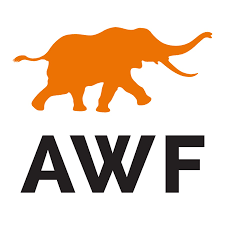
🔎
Their transparency & ratings:
The African Wildlife Foundation has a 4-star rating from Charity Navigator.
“To assist the governments and people of Africa to navigate the continuing economic transition with a significant and representative patrimony of wildlife and wild places intact.”
African Wildlife Foundation
⚒️
What they do:
The African Wildlife Foundation protects a range of vulnerable species across Africa, including giraffes, by rewilding and protecting vital habitats. They provide local rangers with the training, capacity, and equipment they need to respond to threats and improve land management practices. They also provide training on conservation agriculture to local communities, to prevent further deforestation in vulnerable African countries. Furthermore, they deploy sniffer dogs to intercept smuggled wildlife products, such as giraffe hide, and run awareness campaigns alongside WildAid to expose the brutality of the illegal wildlife trade.
🚀
What they’ve achieved:
Today, the African Wildlife Foundation runs and supports conservation projects in 14 African countries to protect wild populations of threatened species, including giraffes. For example, in 2021, they helped to establish Uganda’s first 3 wildlife protected areas surrounding Lake Mburo, Murchison Falls, and Kidepo Valley National Parks. Furthermore, since 2018, they have visited Shanghai schools, partnered with zoos in China, and led conservation awareness sessions with over 1,000 youth to generate greater awareness of the harm caused by the wildlife trade.
✨
Ways to contribute:
You can donate directly to the African Wildlife Foundation through their website. You can also support the charity by making a legacy gift or through leadership giving.
Wild Nature Institute: Science, Education, and Actions for the Protection of Wild Nature
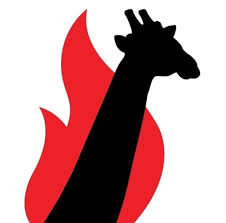
🔎
Their transparency & ratings:
The Wild Nature Institute has a Platinum Seal of Transparency from GuideStar.
“We conduct scientific research on endangered wildlife, and inspire the public to protect wild nature.”
Wild Nature Institute
⚒️
What they do:
The Wild Nature Institute conducts scientific studies on endangered wildlife to further conservation efforts, including giraffes. For example, their scientists are studying wild Masai giraffes in Tarangire and the Serengeti to learn more about their behaviors, and monitor how natural and human factors influence their habitats. They also actively protect the vital wildlife migration corridor from Tarangire to the Northern Plains through community engagement, land planning, and by deploying Masai warrior anti-poaching patrols.
🚀
What they’ve achieved:
Since their founding, the Wild Nature Institute has monitored over 3,500 Masai giraffes throughout their lifetimes, across a 25,000sq km area. This is the largest giraffe study in the world and one of the biggest large-mammal demography studies in history. The information collected will help to formulate future conservation plans and safeguard the future of giraffes in the Savanna. The charity also contributes to the IUCN Red List Assessment for Giraffes.
✨
Ways to contribute:
You can donate directly to the Wild Nature Institute through their website. You can also support the charity by symbolically adopting a baby giraffe or by dedicating funds to their wishlist.
Ivan Carter Wildlife Conservation Alliance: Supporting Conservation Initiatives
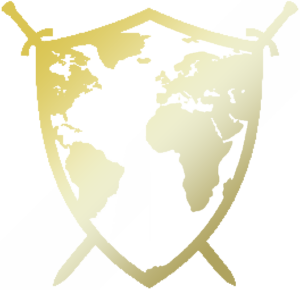
🔎
Their transparency & ratings:
According to their financial report, the Ivan Carter Wildlife Conservation Alliance spent 80% of their expenditure on conservation grants and around 1% on advertising.
“True conservation will happen when a wildlife hero on the front line has everything they need to be fully effective – we intend to give them these tools.”
Ivan Carter Wildlife Conservation Alliance
⚒️
What they do:
The Ivan Carter Wildlife Conservation Alliance develops and supports wildlife conservation projects to protect a wide range of threatened species across Africa, including giraffes. They also offer financial and equipment funding to effective projects run by like-minded organizations such as the Giraffe Conservation Foundation and Zambezi Delta Anti-poaching Teams. Moreover, they work as one of Africa’s premier safari guide companies in 11 different countries to raise awareness of the plight facing native wildlife, including giraffes.
🚀
What they’ve achieved:
Since their founding, the Ivan Carter Wildlife Conservation Alliance has helped native populations of Rothschild giraffes to expand their range by participating in the largest giraffe relocation ever undertaken in East Africa. Furthermore, 2 baby giraffes have already been born in the Murchison National Park thanks to the move. In addition, Ivan Carter has hosted television documentaries for over 10 years, to highlight conservation efforts on the continent, including Carter’s War.
✨
Ways to contribute:
You can donate directly to the Ivan Carter Wildlife Conservation Alliance through their website, via PayPal, cheque, or by using a credit card.
Born Free Foundation: Ending Wildlife Conflict
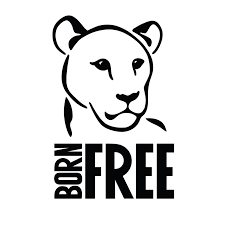
🔎
Their transparency & ratings:
The Born Free Foundation has a 3-star rating from Charity Navigator and a Platinum Seal of Transparency from GuideStar.
“From the start, we have campaigned for a future where animals and people can co-exist and where threatened and endangered species are protected for generations to come.”
Born Free Foundation
⚒️
What they do:
The Born Free Foundation works with various local partners to conserve the remaining populations of reticulated giraffes in the Meru Conservation Area, Kenya. They do this by mitigating conflict between giraffes and local villages by implementing natural solutions to crop loss caused by giraffes. They also regularly monitor local giraffe populations to identify imminent threats and have created the Twiga Team to remove snares within giraffe habitat. In addition, the charity increases community awareness by running giraffe conservation and behavior workshops.
🚀
What they’ve achieved:
Since their founding, the Born Free Foundation’s Twigga Team has removed over 100 snares every month across 5,000 km2 of the Meru Conservation Area to protect wild giraffe populations. Furthermore, since the launch of their Saving Meru’s Giants program in 2021, the charity has uniquely identified 45 giraffes using AI technology. The information collected will help to improve further conservation efforts.
✨
Ways to contribute:
You can donate directly to the Born Free Foundation through their website. You can also support the charity by symbolically adopting a giraffe or by joining one of their campaigns.
How Can You Select the Best Charities to Support?
The charities on the list are, we deem, the best charities for protecting giraffes. However, you may have a particular charity you want to support. Let’s look at what you can do to ensure your contribution has the most significant impact.
- Check out the charity website. Charities that are worthy of your donations are transparent in their mission and their figures. Familiarize yourself with their history, mission, and values. Their website usually is the best place to start.
- Identify the charity’s mission. Without a goal, the charity is likely to fail. If the charity’s mission isn’t clear, it’s probably worth looking for a charity that does have a clear mission.
- Check if the charity has measurable goals. An effective charity has clear goals. You want to know your donation will help the charity reach its goals. But if it doesn’t have targets, it’s likely to fail or squander your gift. The charity should be able to account for its spending and supply evidence of the work they do.
- Assess the successes or goals the charity has achieved. You wouldn’t invest in a business if it kept missing its targets. In the same way, charities are like this too. If no one is assessing a charity’s progress in reaching its targets, the chances are they’re not making a substantial positive change.
- Check the charity’s financials and stats. Trustworthy organizations will publish financial statements and reports each year. Some might be exempt from having to do so, but they should be able to provide them to public members who are interested in donating.
- Locate sources who work with or benefit from the charity. Word of mouth and first-hand experience of a charity’s work lets you know the charity’s quality. If you’re able to do so, check out the charity for yourself or speak to someone familiar with it. This way, your donation will go to the right place.
How Can You Best Support These Charities?
After you’ve made your decision, it’s time for you to decide on how you’d like to help the charities you’ve chosen. Check how you can help – each charity runs specific programs that have unique aims. Find out what the aim of such programs is and whether they are right for you.
Here are a few ways you can help your chosen charity:
- Donate money. You can find donation pages on the website of most charities. Your donation can be a one-time payment, or you can set it to be deducted regularly at different intervals. You can mostly pay via credit card, but some charities also take PayPal or Bitcoin payments.
- Buy their official merchandise. Charities can also raise money by selling merchandise. So, you can support them by buying the mugs, shirts, caps, pens, pencils, and any other such items they may be selling. Ideally, you should buy as much as you can to share and spread the word about the charity’s activities.
- Engage in volunteer work. As you’ve seen from our descriptions above, some charities engage in a lot of local and grassroots programs. You can help by taking on and organizing the program in your local area.
- Help their fundraising efforts. You can spread the word about the charity in your workplace, school, church, etc., and hold creative fundraising drives on social media or offline within your small circles.
- Share their stories. Most charities have compelling stories that you can share with your audience to attract more people to the cause.
Final Thoughts
Now it is up to you to select the charity that resonates most with you. And whichever charity you end up choosing and contributing to, we are sure that they will immensely appreciate your support. Hopefully, the information within this article has made this selection process a bit easier for you to support charities dedicated to protecting giraffes – based on the causes that matter most to you.
Stay impactful,

PS: Finally, I want to leave you with a thought-provoking TED talk from Dan Pallotta, a leading philanthropic activist and fundraiser, about what is wrong with the way we think about charities – and what we can do about it:
Sources
- IFAW: Are giraffes endangered?
- Giraffe Conservation Foundation: Home page
- Giraffe Conservation Foundation: Who is GCF?
- Charity Navigator: Giraffe Conservation Foundation
- GuideStar: Giraffe Conservation Foundation
- Giraffe Conservation Foundation: Giraffe Conservation Strategies
- Giraffe Conservation Foundation: Giraffe Resource Center
- Giraffe Conservation Foundation: Giraffe on the move
- Giraffe Conservation Foundation: Giraffe Action Fund
- Giraffe Conservation Foundation: Annual Report 2021/22
- Giraffe Conservation Foundation: World Giraffe Day
- Giraffe Conservation Foundation: Programmes & Initiatives
- Giraffe Conservation Foundation: Donate
- Giraffe Conservation Foundation: Adopt
- Bright Red Buffalo: Home page
- International Anti-Poaching Foundation: Home page
- Charity Navigator: International Anti-Poaching Foundation
- GuideStar: International Anti-Poaching Foundation
- International Anti-Poaching Foundation: Akashinga
- International Anti-Poaching Foundation: Why do poachers kill giraffes?
- International Anti-Poaching Foundation: LEAD Ranger
- International Anti-Poaching Foundation: Our Impact
- International Anti-Poaching Foundation: Annual Report 2021
- International Anti-Poaching Foundation: Donate
- International Anti-Poaching Foundation: Fundraise
- International Anti-Poaching Foundation: Become a Guardian
- Sheldrick Wildlife Trust: Home page
- Sheldrick Wildlife Trust: Mission & History
- Charity Navigator: Sheldrick Wildlife Trust
- GuideStar: Sheldrick Wildlife Trust
- Sheldrick Wildlife Trust: Aerial Operations
- Sheldrick Wildlife Trust: Anti-Poaching
- Sheldrick Wildlife Trust: Water for Wildlife
- Sheldrick Wildlife Trust: Veterinary Units
- Sheldrick Wildlife Trust: Saving Habitats
- Sheldrick Wildlife Trust: Donate
- Sheldrick Wildlife Trust: Shopping
- Sheldrick Wildlife Trust: Adopt an Orphan
- African Parks: Home page
- African Parks: Our Story
- Charity Navigator: African Parks
- African Parks: The African Parks Model
- African Parks: Saving Wildlife
- African Parks: Annual Report 2021
- African Parks: Malawi gains new giraffe population in Majete Wildlife Reserve
- African Parks: Donate
- African Parks: Join Us
- Save Giraffes Now: Home page
- GuideStar: Save Giraffes Now
- Save Giraffes Now: 2021 Impact Report
- Save Giraffes Now: Projects
- Save Giraffes Now: Luambe-Lukusuzi Giraffe Wildlife Corridor
- Save Giraffes Now: Rapid Response Ranger Training
- Save Giraffes Now: Donate
- Save Giraffes Now: GiraffeSpotter
- Tribu Travel: Home page
- African Wildlife Foundation: Home page
- Charity Navigator: African Wildlife Foundation
- African Wildlife Foundation: Giraffe
- African Wildlife Foundation: Sustainable Agriculture
- African Wildlife Foundation: Stop the Trafficking
- African Wildlife Foundation: Stop the Demand
- WildAid: Home page
- African Wildlife Foundation: Where we work
- African Wildlife Foundation: 60 years of visionary conservation leadership
- African Wildlife Foundation: Annual Report 2021
- African Wildlife Foundation: Donate
- African Wildlife Foundation: Legacy Giving
- Wild Nature Institute: Home page
- GuideStar: Wild Nature Institute
- Wild Nature Institute: Giraffe Science
- Oxford Academic: Spatial variation in giraffe demography
- Wild Nature Institute: Donate
- Wild Nature Institute: Adopt a baby giraffe
- Ivan Carter Wildlife Conservation Alliance: Home page
- Cause IQ: Ivan Carter Wildlife Conservation Alliance
- Ivan Carter Wildlife Conservation Alliance: How we are making a difference
- Ivan Carter Wildlife Conservation Alliance: Projects we support
- Ivan Carter Wildlife Conservation Alliance: Our Team
- Ivan Carter Wildlife Conservation Alliance: Successes & Achievements
- Ivan Carter Wildlife Conservation Alliance: TV Shows
- Carter’s War: Home page
- Ivan Carter Wildlife Conservation Alliance: Donate
- PayPal: Donate
- Born Free Foundation: Home page
- Charity Navigator: Born Free Foundation
- GuideStar: Born Free Foundation
- Born Free Foundation: Giraffes
- Born Free Foundation: Giraffe Conservation
- Born Free Foundation: Team Twiga takes action to save giraffes
- Born Free Foundation: Conservation Report 2021-2022
- Born Free Foundation: Donate
- Born Free Foundation: Adopt a Giraffe
- Born Free Foundation: Take Action


